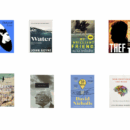Thinking deeply about strategy
“Where is (success) coming from? It’s coming from having, within a company, difficult-to-replicate and usually intangible resources. Things that can generate and sustain competitive success – things like reputation, a good customer group, network externalities, experienced and competent people performing your processes.
…we know that companies get good at something by doing it. Now that doesn’t mean (they were) always good at it. We have to understand that competencies are created by activity. If you internalize enough of those activities, you actually get good at them, and they give you a sustainable advantage for a certain period of time.
…and then the advantage evaporates on you.”
Strategy’s strategist: An interview with Richard Rumelt, The McKinsey Quarterly (August 2007)
Richard Rumelt is a modern giant in the field of strategy. He is a professor at the Anderson School of Management, University of California, and a visiting professor at France’s INSEAD. In this interview, he provided plenty of enlightenment for those who wonder what good strategy is and where it comes from.
Let’s pull apart the excerpt quoted here. First, note the emphasis on intangibles. Modern-day strategy does not emphasise things you can hold and touch, like plants and equipment and servers and vehicles: it focuses on the things that you can’t see. A company’s reputation or standing with the outside world; its emotional bond with its key customers; the way in which it motivates its people to do the extraordinary – those are the things that competitors can’t mimic or replicate.
Think about it: your IT system is, in itself, nothing. Or rather, nothing strategic. Sure, it helps you work better and manage yourself more efficiently (maybe); but nothing stops your competitors from buying that exact same system and configuring it in the exact same way you do. In fact there will be an army of vendors, trainers and consultants available to help them do exactly that.
But your IT system can be something else. It can be a cog in a bigger ‘machine’: a less visible machine that assembles data, enriches it through analysis, and passes it on to highly motivated people who use it to very good effect in making strategic decisions and serving customers better. It is in those intangible relationships that strategy lies: in why your people work better, and why your processes flow better, and why your customers love you.
A second insight: strategy is not developed in great cloudbursts of creative thought. Most of the time it is developed through the far more mundane process of trial and error. I hate to disappoint all of you creative geniuses out there; but in my experience, a great strategy just emerges, slowly and often painfully. People make a bet on something; they try to do it; they get it wrong; then they learn to do it better, and better, and better. Eventually, they become so good at it that the world stops to take notice (and people like me start writing about it!).
And finally, the killer punch: it doesn’t last! No matter how good your strategy, how painstakingly developed, how superior to all the pretenders out there – it evaporates one day. All that work will disappear into the ether someday. All that will remain is what you have learned, and what you can apply in starting all over again.

Buy Sunny Bindra's new book
The X in CX
here »
Popular Posts
- Make this your year of being boringJanuary 4, 2026
- My books of the yearDecember 14, 2025
- Confessions of an explaining personDecember 7, 2025
- Here’s why you should become foolishNovember 30, 2025
- How to listen, really listenNovember 16, 2025











